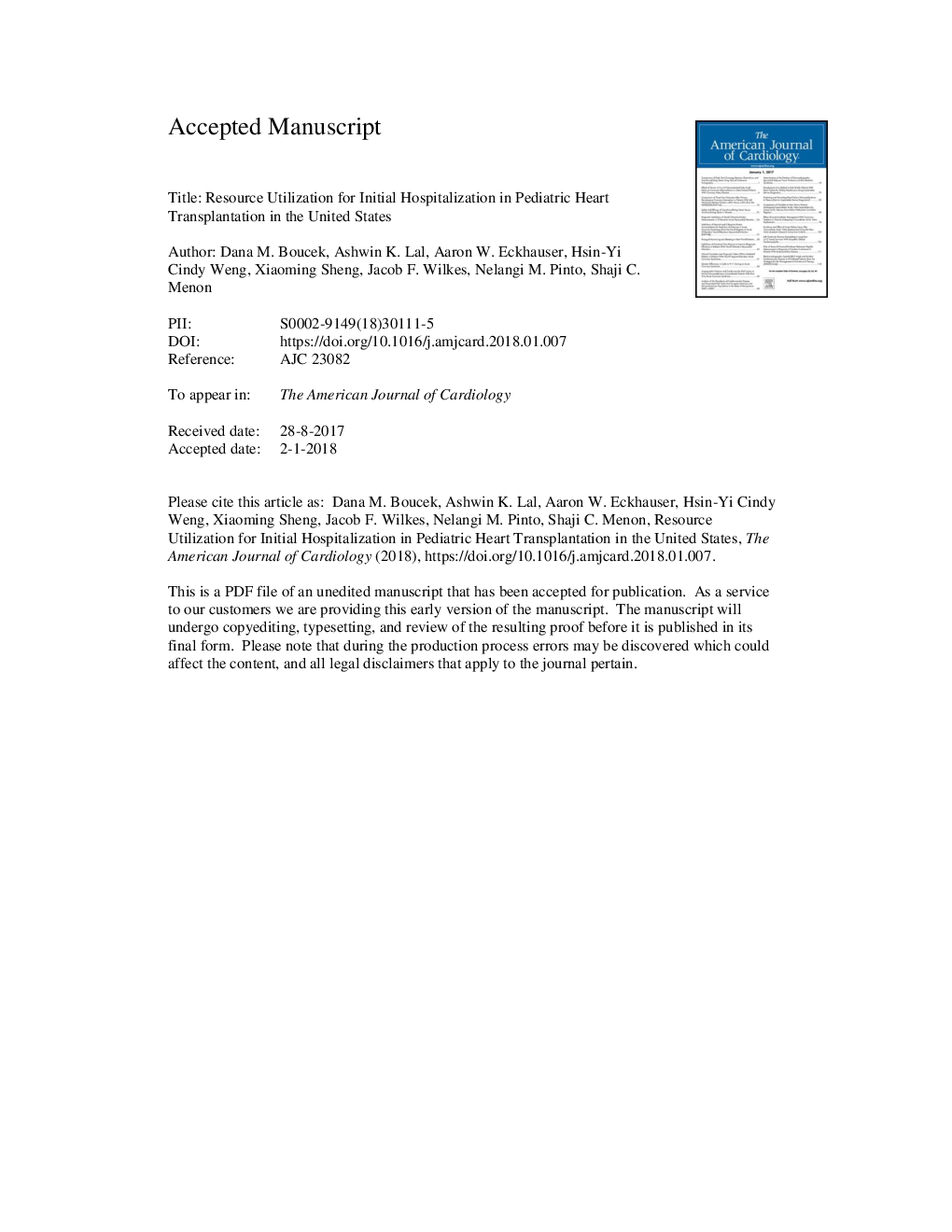| Article ID | Journal | Published Year | Pages | File Type |
|---|---|---|---|---|
| 8651332 | The American Journal of Cardiology | 2018 | 18 Pages |
Abstract
Pediatric heart transplantation (HT) is resource intensive. Event-driven pediatric databases do not capture data on resource use. The objective of this study was to evaluate resource utilization and identify associated factors during initial hospitalization for pediatric HT. This multicenter retrospective cohort study utilized the Pediatric Health Information Systems database (43 children's hospitals in the United States) of childrenââ¤19 years of age who underwent transplant between January 2007 and July 2013. Demographic variables including site, payer, distance and time to center, clinical pre- and post-transplant variables, mortality, cost, and charge were the data collected. Total length of stay (LOS) and charge for the initial hospitalization were used as surrogates for resource use. Charges were inflation adjusted to 2013 dollars. Of 1,629 subjects, 54% were male, and the median age at HT was 5 years (IQR [interquartile range] 0 to 13). The median total and intensive care unit LOS were 51 (IQR 23 to 98) and 23 (IQR 9 to 58) days, respectively. Total charge and cost for hospitalization were $852,713 ($464,900 to $1,609,300) and $383,600 ($214,900 to $681,000) respectively. Younger age, lower volume center, southern region, and co-morbidities before transplant were associated with higher resource use. In later years, charges increased despite shorter LOS. In conclusion, this large multicenter study provides novel insight into factors associated with resource use in pediatric patients having HT. Peritransplant morbidities are associated with increased cost and LOS. Reducing costs in line with LOS will improve health-care value. Regional and center volume differences need further investigation for optimizing value-based care and efficient use of scarce resources.
Related Topics
Health Sciences
Medicine and Dentistry
Cardiology and Cardiovascular Medicine
Authors
Dana M. MD, MS, Ashwin K. MD, Aaron W. MD, MS, Hsin-Yi Cindy MS, Xiaoming PhD, Jacob F. BS, Nelangi M. MD, MS, Shaji C. MD,
